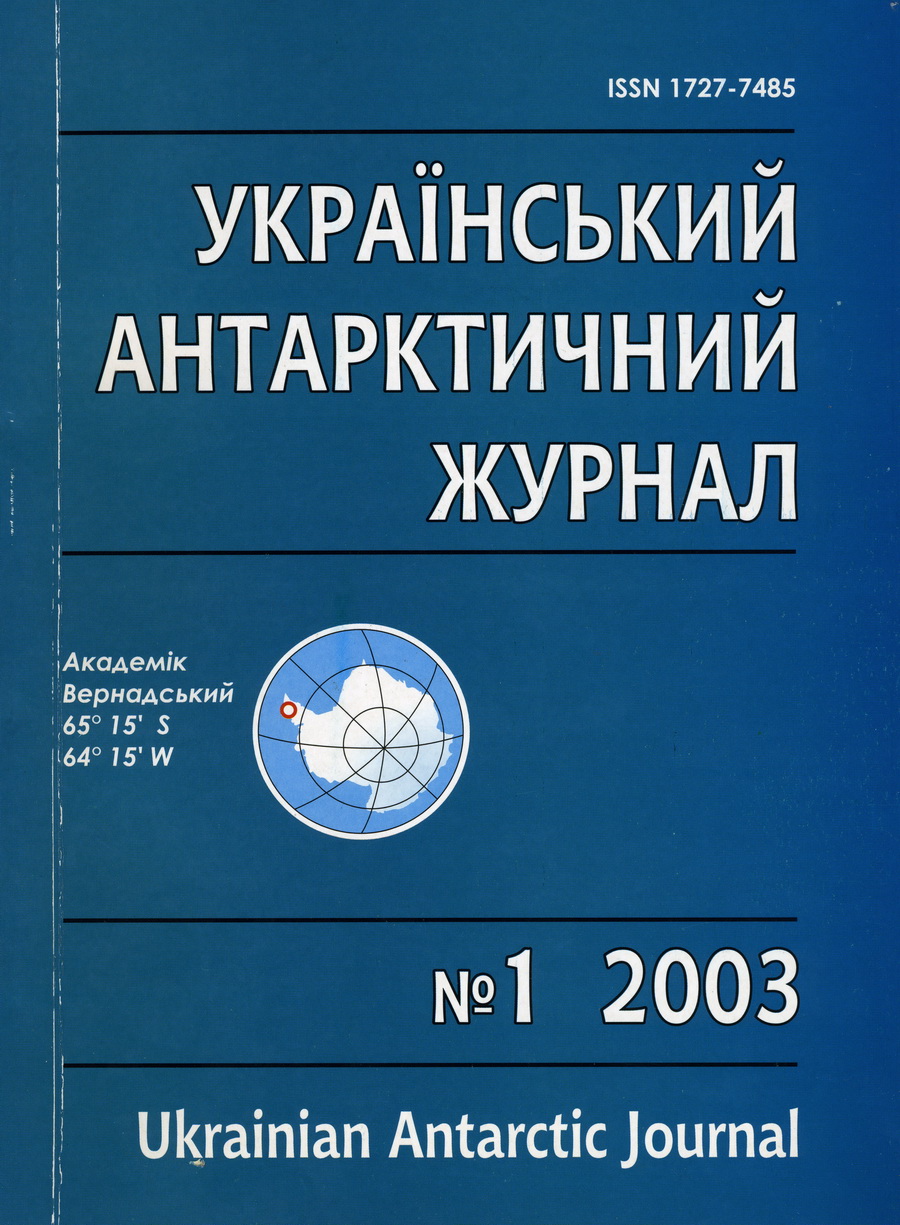Assessment of the sedimentation rate of the suspended matter in the surface layer of the water mass in the Bransfield Strait (Western Antarctica) using 234Th as a natural radiotracer
- suspended matter,
- particle flux,
- thorium-234,
- Bransfield Strait,
- Antarctica
Abstract
Measurements of particulate and dissolved 234Th have been carried out in the surface waters across the Bransfield Strait. The disequilibrium discovered between concentrations of the total 234Th and its soluble long-lived mother radionuclide – 238U has allowed an evaluation of particle fluxes in the euphotic zone. The highest flux was found in a mixing zone of waters coming from the Bellingshausen Sea and the Weddell Sea. Total particle fluxes from the upper 150-m water column are estimated of about 2.2 g·m-2·day-1 in the eastern part of the Strait and 3.1 g·m-2·day-1 in the western area. Residence time of the sinking particles in the upper 150 m is assessed to be in the range of 105 to 120 days, which corresponds with the duration of spring-summer months when the Strait is free from the ice cover limiting of the development of phytoplankton assemblages.
References
- Gulin, S.B., Polikarpov, G.G., Yegorov, V.N. et al. (1995). Izuchenie sedimentatsionnogo vynosa vzveshennogo veschestva, biogennyh elementov i zagriazniaiushih veshestv iz poverhnostnogo sloia vody Chernogo Moria v peiod s 1992 po 1994 gg. [Studying the sedimentation carryover of the suspended matter, biogenic elements and pollutants from the surface layer of the Black Sea in 1992-1994]. Geohimia, 4(6), 863-873. [In Russian]
- Polikarpov, G.G., & Yegorov, V.N. (1986). Morskaia dinamicheskaia radiohemoekologia [Marine dynamic radiochemoecology]. Moscow, Energoatomizdat. [In Russian]
- Samyshev, E.Z. (1991). Antarkticheskii kril' i struktura planktonnogo soobschestva v yego areale [Antarctic krill and the structure of planktonic community in its range]. Moscow, Nauka. [In Russian]
- Barcena, M.A., Isla, E., Plaza, A. (2002). Bioaccumulation record and paleoclimatic significance in the western Bransfield Strait. The last 2000 years. Deep Sea Res. II, 49, 935-950.
- Buessler, K.O. (1991). Do upper-ocean sediment traps provide an accurate record of particle flux? Nature, 353, 420-423.
- Buessler, K.O., Benitez-Nelson, C., Rutgers van der Loeff, M. et al. (2001). An intercomparison of small- and large-volume techniques for thorium-234 in seawater. Marine Chemistry, 74(1), 15-28.
- Chen, J.H., Edwards, R.L., & Wasserburg, G.J. (1986). 238U, 234U and 232Th in seawater. Earth and Planetary Science Letters, 80, 241-251.
- Cochran, J.K., Buessler, K.O., Bacon, M.P. et al. (2000). Short-lived thorium isotopes (234Th, 228Th) as indicators of POC export and particle cycling in the Ross Sea, Southern Ocean. Deep-Sea Research II, 47(15-16), 3451-3490.
- DeMaster, D.J., Nelson, T.M., Nittrouer, C.A. et al. (1987). Biogenic silica and organic carbon accumulation in modern Bransfield Strait sediments. Antarctic Journal of the United States, 22, 108-110.
- Dunbar, R.B. (1984). Sediment trap experiments on the Antarctic continental margin. Antarctic Journal of the United States, 19, 70-71.
- Gulin, S.B. (2000). Seasonal changes of 234Th scavenging in surface water across the western Black Sea: an implication of the cyclonic circulation patterns. Journal of Environmental Radioactivity, 51(3), 7-19.
- Honjo, S. (1980). Material fluxes and modes of sedimentation in the mesopelagic and bathypelagic zones. Journal of Marine Research, 38, 53-97.
- Honjo, S. (1990). Particle fluxes and modern sedimentation in the polar oceans. In: W.O. Smith (Ed.), Polar Oceanography, Part B: Chemistry, Biology and Geology. New York, Academic Press. pp. 687-739.
- Huntley, M., Karl, D.M., Niiler, P. et al. (1991). Research on Antarctic Ecosystem Rates (RACER): an interdisciplinary field experiment. Deep-Sea Research, 38, 911-941.
- Palanques, A., Isla, E., Masque, P. et al. (2002). Downward particle fluxes and sediment accumulation rates in the western Bransfield Strait: Implications of lateral transport for carbon cycle studies in Antarctic marginal seas. Journal of Marine Research, 60, 347-365.
- Rutgers van der Loeff, M.M., & Moore, W.S. (1999). Determination of natural radioactive tracers. In: K. Grasshoff, M. Ehrardt, K. Kremling (Eds.). Methods of Seawater Analysis. Weinheim: Verlag Chemie. Chapter 13.
- US GOFS. (1989). Sediment trap technology and sampling. In: G. Knuer, V. Asper (Eds.). US Global Ocean Flux Study: Planning Report №10 of the Working Group on Sediment Trap Technology and Sampling. Woods Hole (USA): WHOI.
- Wefer, G., Fisher, G., Futterer, D.K., & Gersonde, R. (1988). Seasonal particle flux in the Bransfield Strait, Antarctica. Deep-Sea Research, 35, 891-898.

